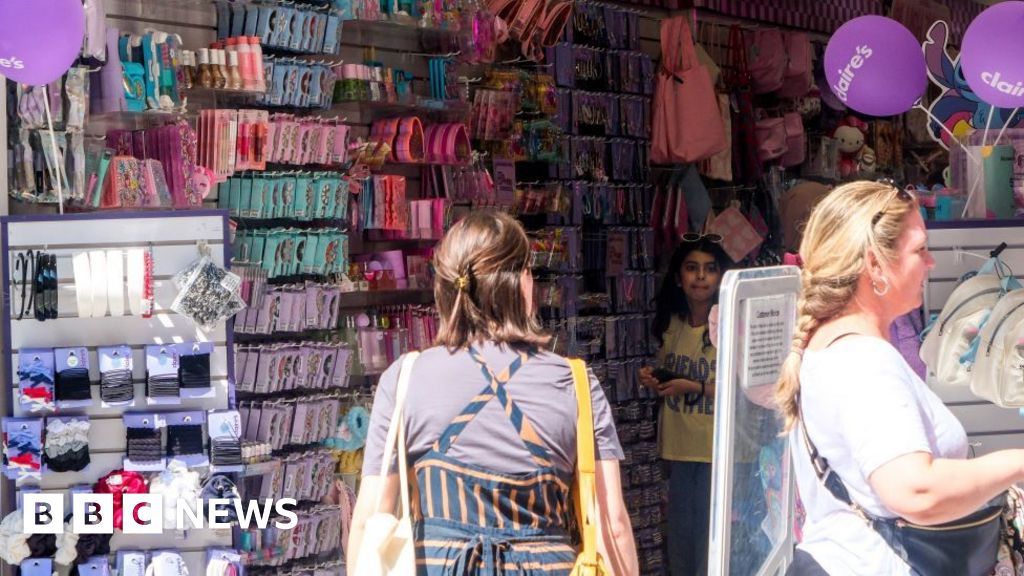They were two of the most talked-about tech devices of their time.
But Apple has classed two of its popular iPhones as 'vintage' – not even a decade after their release.
The iPhone 7 Plus, released in 2016, and iPhone 8, released in 2017, have officially been added to the tech giant's 'vintage' products list.
And unlike a trendy pair of jeans or a rare vinyl record, 'vintage' doesn't necessarily mean you'll be able to sell them for large amounts online.
In fact, if you still own a iPhone 7 Plus or an iPhone 8, it means you may not be able to get it repaired by Apple if and when it breaks.
Meanwhile, two further Apple products have gone from the vintage list to the dreaded 'obsolete' list – signifying their days are nearly numbered.
All Apple products progress through three categories – current, vintage, and obsolete.
Even the new iPhone 16 will become obsolete one day, consigning it to the great technology scrap heap.
Apple has once again updated its dreaded 'vintage' and 'obsolete' products list, consigning more of its tech to the scrap heap
Upon its release in 2016, the iPhone 7 Plus (pictured), starting from $749 (£719), boasted a 12-megapixel telephoto lens and 5.5-inch screen. iPhone 7 and iPhone 7 Plus also marked the elimination of the headphone jack
For many Apple fans, it won't feel like it was that long ago that the iPhone 8 and iPhone 7 Plus were released to a widely rapturous response.
At the time of its release in 2017, MailOnline called the $699/£699 iPhone 8 'the best handset Apple has ever made' with its all-glass back and wireless charging.
Meanwhile, the iPhone 7 Plus from the year before, starting from $749/£719, had a 12-megapixel telephoto lens, a 5.5-inch screen, and controversially no headphone jack.
Now, as noticed by MacRumors, all iPhone 7 Plus models, as well as 64GB and 256GB iPhone 8 models, have been newly added to the vintage list by Apple.
The exceptions are the iPhone 8 128GB model which isn't included on the vintage list yet, while the (PRODUCT)RED iPhone 8 was already listed as vintage.
A 'vintage' product means Apple stopped selling it more than five years ago and as a result it may or may not be able to receive Apple services.
Apple retail stores and Apple Authorised Resellers are still able to offer repairs for 'vintage' devices, but only if the required parts are available.
Apple products will be 'vintage' for two years before they then become officially 'obsolete'.
At the time of its release in 2016, MailOnline called Phone 8 'the best handset Apple has ever made' with its all-glass back and wireless charging
Vintage and obsolete Apple products
Apple products are considered vintage when Apple stopped distributing them for sale more than 5 and less than 7 years ago.
As a result, that product is no longer guaranteed by Apple to be repairable at an Apple Store or authorised service provider.
Products are considered obsolete, meanwhile, when Apple stopped distributing them for sale more than 7 years ago.
Apple discontinues all hardware service for obsolete products, and service providers cannot order parts for obsolete products.
Two more Apple products have graduated from the vintage list to the 'obsolete' list –the iPad Air 2 and the iPad Mini 2.
The $499/£399 iPad Air 2, released in October 2014, was known for its remarkable slender profile at just 6.1mm – making it the thinnest tablet in the world at the time.
And the iPad Mini 2 from 2013, starting at £319/$399, introduced a retina display to the Mini line while boosting processing power compared with its 2012 predecessor.
Apple considers a product 'obsolete' when it stopped distributing it for sale more than seven years ago.
As Apple explains, an obsolete device has lost support and is no longer eligible for repair at an Apple Store or an authorised third-party service.
Essentially it means if the product stops working Apple is not obliged to fix it – rendering it barely more than a relic from the past.
Apple explains on its website: 'Apple discontinues all hardware service for obsolete products, and service providers cannot order parts for obsolete products.
'Mac laptops may be eligible for an extended battery-only repair period for up to 10 years from when the product was last distributed for sale, subject to parts availability.'
The $499/£399 iPad Air 2 (pictured), released October 2014, was remarkably thin at just 6.1mm and also lighter than its predecessor, the original iPad Air
The $499/£399 iPad Air 2 (pictured), released October 2014, was known for its remarkable slender profile at just 6.1mm
Although Apple releases several devices to feverish fanfare every year, even more are quietly consigned to the technology scrap heap.
Adam Engst, tech writer at Mac Business Solutions, said products in the vintage and obsolete categories 'are living on borrowed time'.
'It’s easy to assume that Apple will fix whatever you bring in, but unfortunately, that’s not the case,' he said.
'Apple has policies surrounding how long it guarantees to provide service and parts, which is reasonable.
'No one would expect Apple to repair a 128K Mac from 1984.'
But environmental campaigners believe a lifetime of less than a decade isn't reasonable for a tech device retailing for several hundreds of pounds.
Tech companies including Apple have faced fierce criticism for fuelling an 'e-waste crisis', where piles of electronic waste are building up in landfill.
The vast scale of Earth's e-waste REVEALED in shocking report
From old iPhones to discarded vapes, a shocking report warns that our old tech is creating unmanageable amounts of e-waste.
The UN report reveals that, in 2022, the world created 62 million tonnes of e-waste - the equivalent weight of 6,000 Eiffel Towers.
Worryingly, the world's waste is increasing by 2.6 million tonnes each year and could hit as much as 82 million tonnes by 2030.
A shocking report reveals that the world generated 62 million tonnes of e-waste in 2022 including thousands of tonnes of abandoned solar panels. This image shows piles of waste awaiting recycling at a centre in Germany
What's more, less than a quarter of that waste is recycled - despite containing billions of dollars of gold and rare minerals.
After a device is discarded and e-waste is warmed up, toxic chemicals are released into the air, damaging the atmosphere.
E-waste in landfills can also seep toxic materials into groundwater, affecting animals and plants.
'Electronic waste is the world's fastest-growing waste stream and represents a global crisis,' said Nathan Proctor, senior director of Public Interest Research Group's right to repair campaign.
 (1).png)
 2 months ago
94
2 months ago
94

















